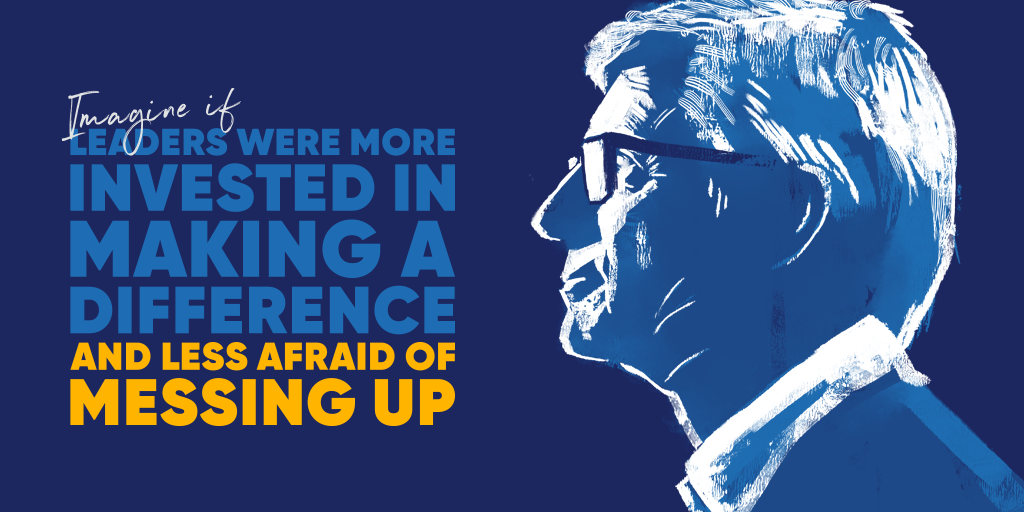Insight article

What can Bill Gates and the Rolling Stones teach us about defining leadership moments?
Leadership is often defined by pivotal moments – those critical junctures where a leader’s decisions and actions can have a profound impact on their team, organisation, or even society. Be it an event, a meeting, a talk or just a memo. These moments can define a leader’s legacy and reveal their true character. While leadership theories and strategies provide valuable guidance, it’s the art of storytelling that can truly illuminate these defining leadership moments.
Thinking back to some great leadership moments that changed the world, I immediately hit some 90’s nostalgia with the Windows 95 launch on 24 August 1995. Bill Gates is in peak-marketing storyteller mode, Steve Ballmer at top volume, with some suspect dancing on stage. Whilst we can look back with some humour now, it is still a great example of a defining leadership moment for Microsoft, but also for the world. At the time, the New York Times called it “the splashiest, most frenzied, most expensive introduction of a computer product in the industry’s history.” In 1995, computers were still mostly for the office and productivity. But Windows 95 brought with it a word that consumers understood: “Start.” Start what? Start anything. Envisioning a brand-new era in home computing for everyone – a story that millions believed and could imagine for themselves, with the Rolling Stones ‘Start Me Up’ as the soundtrack.
The release was a tremendous success, with Microsoft selling 7 million copies in the first five weeks, and Windows 95 was soon the most popular operating system on the market. The event put not only Windows 95 on the map, but also turned Microsoft into a brand name like General Mills and Ford and shone a bright, international spotlight on the company’s somewhat nerdy and socially awkward CEO. Windows 95 is very likely the first major operating system most people of a certain age remember.
All because of a brilliant narrative that Bill Gates managed to embed into a real defining moment. A moment that mattered! So how can storytelling capture the essence of these moments and reveal the power of leadership in action?
Capturing the essence
Defining leadership moments are often complex, multifaceted events that involve tough choices, ethical dilemmas, and high stakes. Storytelling has the unique ability to distil these moments into a narrative that captures their emotional and moral essence. By weaving a story around a particular event, leaders can communicate not just what happened but why it matters and what it reveals about their values and principles.
Creating defining moments for your other leaders
By creating stories that matter in your defining moment or event, you can create an environment that drives inspiration for other leaders inside your organisation. Providing alignment and enablement for those leaders to create their own moments that matter.
Providing context
A defining leadership moment rarely occurs in isolation. It is often the culmination of a leader’s experiences, values, and beliefs. Through storytelling, leaders can provide the context necessary for others to understand the significance of the moment. They can share their journey, the challenges they’ve faced, and the lessons they’ve learned along the way, painting a vivid picture of the path that led to the critical decision or action.
Inspiring others
Defining leadership moments are not just about the leader; they are about the impact on others. Storytelling allows leaders to highlight the individuals and teams involved, showcasing their resilience, dedication, and contributions. By sharing these stories, leaders can inspire others to rise to the occasion when faced with their own defining moments, fostering a culture of leadership throughout the organisation.
Transmitting values and principles
Leadership moments are often defined by the alignment of actions with core values and principles. Storytelling becomes a powerful tool for conveying these values. When leaders narrate how they made a tough decision guided by their principles, it reinforces the organisation’s values and helps team members understand the importance of adhering to them in their own work.
Building trust
Trust is a cornerstone of effective leadership. When leaders use storytelling to recount their defining moments with honesty and vulnerability, it fosters trust within the team. Sharing not only successes but also moments of doubt or mistakes demonstrates authenticity and relatability. This transparency can deepen the connection between leaders and their followers.
Creating a legacy
Defining leadership moments are often the building blocks of a leader’s legacy. By crafting narratives around these moments, leaders can ensure that their actions and the lessons learned endure beyond their tenure. These stories become part of the organisational folklore, serving as a source of inspiration and guidance for future leaders.
Encouraging reflection
Storytelling allows leaders to reflect on their defining moments, gaining deeper insights into their own leadership journey. It prompts leaders to analyse their choices, strengths, weaknesses, and values. This self-awareness can be a catalyst for personal growth and continuous improvement.
Defining leadership moments are the crucibles in which leaders are forged and their impact is felt. Storytelling is the key to unlocking the transformative potential of these moments, enabling leaders to communicate their values, inspire others, and leave a lasting legacy. Through storytelling, leaders can connect with their teams on a profound level, fostering trust and building a culture of leadership that endures. In essence, storytelling brings these moments to life, allowing us to see the true power and potential of leadership in action.




